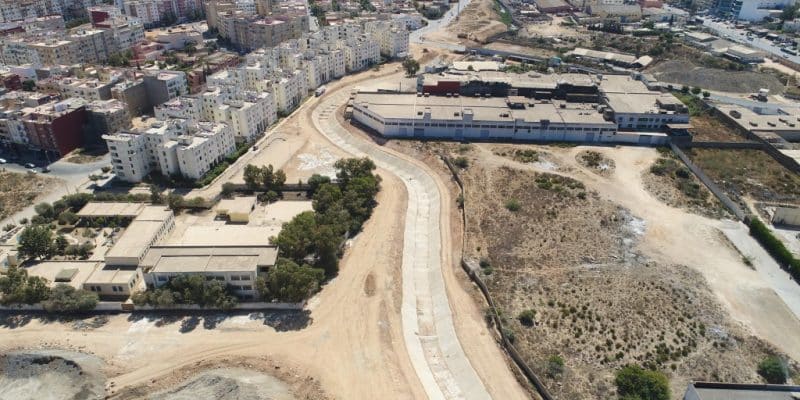In response to the floods that have weakened its natural resources and tourism value, the Moroccan city of Bouskoura is starting work to optimise its drainage networks, which will improve the living environment of its 138,000 inhabitants by 2025.
In Morocco, the city of Bouskoura, located 20 kilometres from Casablanca, wants to strengthen its resilience after the floods that devastated the districts of Lahraouiyine, Médiouna, Tit Mellil, Ahl Loghlam, DarBouazza, Bouskoura, Hay Sadri, Ain Chock and Hay Hassani in January 2021. To achieve this, the local authorities will build new sanitation infrastructure between March 2023 and August 2025.
At a total cost of 156 million Moroccan dirhams (14 million euros), the project implemented by the Bouregregreg and Chaouia Hydraulic Basin Agency (ABHBC) aims to carry out a hydrological study of Bouskoura as well as “the construction of a trapezoidal canal with a length of 4,072 metres, 410 metres of underground canals, three single Dalot crossing structures and 15 double Dalot crossing structures”, explains Abdellah Chater, the governor of the province of Nouaceur who is coordinating the project.
The initiative, which has the financial and technical support of the Moroccan Ministries of the Interior and Economy and Finance, will also create 50 jobs for young people. “There is drought, but climate change means that heavy rainfall can occur at any time, causing flooding. These investments are of paramount importance to protect the land, the citizens, to make the wadi a place of entertainment and to use its waters for different needs instead of being an enemy for the citizens because of the floods,” explains Abdellatif Maâzouz, president of the Casablanca-Settat region.
Read also-MOROCCO: Lydec will complete its sanitation work in Hay Al Maqam by 2023
At the same time, the government of the Cherifian Kingdom is working to strengthen the climate resilience of Moroccan cities to natural disasters. It is within this framework that Morocco has since 2018 a climate risk monitoring and detection system jointly managed by the Royal Centre for Remote Sensing (CRTS) and the National Meteorological Directorate. This resilience mechanism, which aims to improve early warning systems, aims to “collect and analyse statistical data related to climate risks, particularly in the Marrakech-Safi region as a pilot area for the project”, say the Moroccan authorities.
Benoit-Ivan Wansi






